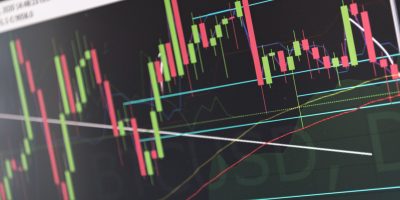Below are my two Satoshis for people who want to become traders.
After the lockdowns due to pandemic and the free money injected into the system, the number of new traders has increased dramatically. Zero commissions and access to brokers from smartphone have also contributed to this explosion in new trading account openings.
However, the fundamentals of trading haven’t changed a bit despite the new influx of liquidity to the market. The fundamentals are related to market microstructure and there has been no major change in that direction and possibly there’ll be very little or none without severely impacting market efficiency. Except if “they” decide to break the markets.
Let me try to summarize below the better and wrong route to becoming a trader. Let us first start with the wrong route.
The Wrong Route
Becoming a trader because of easy access to placing orders with zero commission
This is a trap benefitting brokers that get paid for order flow passed to high frequency traders. There is no free lunch and the commission is hidden somewhere. Otherwise, how could those giant firms report high profits? Most profits come from the pockets of uninformed traders.
Easier access means more crowded markets, more competition and higher probability of loss. The main beneficiaries are the market makers who pocket the spread, or hedge their portfolio, while passing the cost to retail. Easy and free access is a trap for sucking liquidity to professionals from uninformed and unskilled traders. Without the uninformed and unskilled crowd, professionals cannot profit because trading (not investing) is a zero-sum game. More about the trading zero-sum game can be found in my free pdf book (Wiley, 2008) Profitability and Systematic Trading.
Thinking that by buying some books or courses online, that offers sufficient background and knowledge
There are many, in my opinion, snake oil salespeople, which sell online courses to new traders for learning indicators, chart patterns, price action, backtesting, etc. They take advantage of the hopes and dreams of mainly uninformed young people who hope to become financially independent through trading and sell them widely known information in the last 40 years or longer. This information has little face value; it’s how using the information under multiple dynamic market scenarios and skin-in-the-game that is important and this is rarely or never taught because most of those content creators don’t even know how or is impossible to do.
In my opinion it’s not acceptable trying to lure or entice uninformed people, especially young, to become traders, by following a naïve path. “But Joe made a million dollars buying GME options!” Sure, this is what uninformed people don’t get: There is a statistical distribution of winners and losers. The average trader makes next to nothing over the longer term before commissions. In the tails, there are big winners and losers. Some of the big winners write books of “How I Made a Million Dollars” and some of the big losers write books of “How I Lost a Million Dollars”. The information in these books is useless for most part because specific experiences in the markets don’t repeat. The market has a well-defined time arrow. At the end of the day what you learn from the books is the title only.
Subscribing to a signal service or trading room
Signals services that target retail and especially intraday traders are in many cases the certain way to ruin. Some experienced traders may join these rooms or services to fade the signals knowing the hands are weak and amateur traders get scared easily. In addition, no one can be sure about the motives of the operators of these rooms. Are they frontrunning the signals they issue to the crowd beneath?
If someone isn’t sure of what’s going on, the best way is to avoid. The same holds for trading in general. Over the years, some professional traders have been forced to increase their timeframe close to those of strategic allocators to stay under the radar of various predator market algos designed and operated by sophisticated funds. I offer systematic weekly signals for informational purposes on a subscription basis to a small group of experienced traders and this timeframe is even getting challenged slowly. Given what I know, I wouldn’t even think of trading intraday unless it’s for fun and a low risk position once or twice a week. There are claims 90% of intraday traders lose. Based on my quantitative analysis, 100% of intraday traders lose in the long-term.
A Better Route
Having Finance Background
Working for a financial firm a few years to get professional exposure to the markets is a good route to take before becoming a trader. The best traders I’ve met through social media have worked for financial firms a few years at least. They have a sense of the market, asset classes, finance and even economics. This is how I started also. I was working initially in fixed income area developing algorithms for portfolio rebalancing. I had exposure to money markets and forex desks. I was involved in daily risk exposure calculations. I became a trader after I left Wall Street to pursue consulting and software development as an entrepreneur. Most of the people I knew then who were traders without finance background ended up losing everything.
Good knowledge of Statistics and Probability
I cannot overemphasize how important to success is knowledge of statistics and probability. Trading is a game of probabilities and random variables. Knowing the probabilities isn’t even enough; traders need to know the expected payoffs otherwise the longer-term expectation from the game may be negative. This is also a problem with most modern approaches to trading that include machine learning with supervised classification. Although models that calculate probabilities can be easily developed nowadays and have reasonable hit rate, the longer-term expectation may be negative due to asymmetric payoffs. Traditional technical analysis is even worse because the patterns are mostly random and over the longer-term volatility drag on returns destroys profitability. Statistical analysis and analysis of training and test sample performance may help to determine whether the model has potential to perform well in the future but this is tedious and demanding work. There is no free lunch.
Understanding risk and money management
Many underestimate the impact of risk and money management. Especially new traders may go “all in”, some with leverage unfortunately. There are even some on the other extreme that claim all you need in good risk and money management. Here is the problem:
Risk can be calculated but uncertainty is always present. In the presence of uncertainty the optimum bet size is zero, i.e., do nothing, because a large left tail event can cause uncle point and exit from the game. By the way, this is what happened to many passive investors during the dot com and GFC bear markets.
A better way is what market wizards tested for many years and taught us: start small and slowly increase risk to maybe no more than 2% of bankroll on each trade.
“But I’ll never become rich that way!”
Sorry, you are missing the point. Trading can provide a stream of income but becoming rich means increasing risk and that can lead to ruin. Reckless speculation isn’t trading, it’s playing the lotto.
Avoid frequent backtesting
Backtesting is a dangerous and highly misunderstood method. Backtesting cannot tell you which model will be profitable, only which model was profitable in the past and more importantly which model wasn’t profitable. Frequent use of backtesting leads to adoption of random models due to data snooping and selection bias.
Backtesting software will never turn someone to a quant unless the background in probability, statistics, simulation and math is there in the first place along with market skin-in-the-game. Beware of backtests results with extra smooth equity curves and high Sharpe ratio; they may be the outcome of repetitive selection from failed models.
In my opinion, a successful trader needs to resort to backtesting every few years, maybe two or three. In the meantime, models already developed should perform as expected. If not, there is something wrong. Minor improvements to the models are fine but looking constantly for new ones is a bad practice.
Summary
The wrong route to trading
- Becoming a trader because of easy access to placing orders with zero commission
- Thinking that by buying some books or courses online, that offers sufficient background and knowledge
- Subscribing to a signal service or trading room
A better route to trading
- Having Finance Background
- Good knowledge of Statistics and Probability
- Understanding risk and money management
- Avoid frequent backtesting
Disclaimer: Nothing in this blog constitutes a trade recommendation. Read the full disclaimer here.
If you found this article interesting, you may follow this blog via RSS or Email, or in Twitter.





